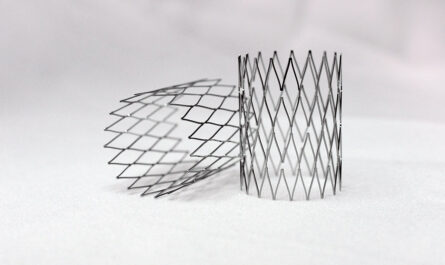Patient handling in nursing homes and hospitals has traditionally relied on manual methods which placed a high physical burden on caregivers. However, with an aging population and increased risk of musculoskeletal injuries among caregivers, there has been a shift toward mechanical lifts and other patient handling equipment. This equipment aims to reduce the physical demands of patient transfers, repositions, and other handling tasks through mechanical assistance.
Benefits of Mechanized Patient Handling
The mechanization of patient handling provides several important benefits for both patients and caregivers:
Reduced Injuries
One of the biggest advantages is a reduction in musculoskeletal injuries among caregivers. Manually lifting and repositioning patients places enormous physical stresses on the body that can lead to strains, sprains, and other injuries over time. Studies have found mechanized lifts can reduce the risk of back injuries by as much as 80% by removing much of the weight burden from the caregiver. This in turn leads to fewer lost workdays and lower medical costs.
Increased Mobility
Many patients today have reduced mobility due to advanced age, dementia, post-surgical recovery or other factors. Patient Mechanical Lift Handling Equipment allow for safer transfers and repositions even for patients with very limited mobility. Slings or sheets can be placed underneath patients to gently lift them from beds, chairs or other surfaces with minimal movement or weight-bearing required on their part. This prevents falls or accidental injuries that could occur during manual handling.
Preservation of Dignity
Another important aspect is preserving patient dignity during transfers. Having to be physically lifted or pulled into position can feel demeaning for patients. Mechanized lifts avoid this issue by gently lifting patients in slings or air-assisted cushions. Patients feel more in control and comfortable.
Types of Mechanized Patient Handling Equipment
There are several main types of mechanized patient handling equipment that are commonly used:
Full Body Slings
Full body slings are fabric slings that wrap around the entire torso and hips/thighs of patients to provide full body support during lifts. These slings can be attached to ceiling lifts, mobile lifts or stand assist lifts to reposition or transfer patients. The slings reduce strain on the caregiver by bearing much of the patient’s weight.
Stand Assist Lifts
Stand assist lifts are devices with sling attachments that can be positioned next to beds, chairs or commodes. They are used to assist patients in standing up or being repositioned. The lift provides enough elevation for a caregiver to assist the patient in moving without having to bear their full weight.
Ceiling Lifts
Ceiling lifts are overhead track systems with electric powered lifts that can move patients short distances, such as from beds to chairs. The lifts have easy to use hand/foot controls and feature full body slings that attach to the device. The overhead tracks allow lifts to be done safely from any angle around the patient.
Mobile Lifts
Mobile lifts are free-standing devices with electric powered lifting booms or arms. They provide lifting capability from floors as well as transfers between surfaces at varying heights. Mobile lifts offer flexibility to use in multiple areas without permanent overhead tracks required.
Bariatric Lifts
Bariatric lifts are higher capacity equipment necessary for handling larger or heavier patients. This includes lifts capable of lifting up to 1,000 pounds or more, as well as wider slings and taller mobile booms to accommodate larger body sizes safely.
Advantages of Different Mechanized Lift Types
Each type of mechanized lift provides unique benefits depending on the care environment and patient needs:
– Ceiling lifts are well-suited for permanent installation in patient rooms where the overhead tracking allows safe lifts from any angle. They also conserve space compared to mobile units. However, they require installation which limits portability.
– Mobile lifts offer maximum flexibility as they can be used anywhere needed without installation. However, their lifting height may be more limited and accessories like slings have to be brought to each location.
– Stand assist lifts help patients stand safely but have a smaller lifting range than ceiling or mobile devices. They are useful as complementary equipment.
– Bariatric equipment is necessary to handle larger patients safely but also has higher installation and purchase costs. Their oversized capacity is useful where needed.
Overall, most facilities use a combination of ceiling lifts in permanent locations supplemented by mobile units that provide added flexibility when and where needed. The right mix depends on each organization’s unique needs and space configurations. Proper ergonomic assessments help determine the best equipment strategies.
Implementing Mechanized Lift Programs
A successful mechanized patient handling program requires more than just purchasing equipment. Facilities must systematically address culture change, training, policies and maintenance to fully benefit:
– Develop a policy requiring lifts for specified tasks to change behaviors and protect staff.
– Provide extensive hands-on training for all staff on lift operation and safe transfer techniques. Training should be ongoing.
– Monitor implementation and encourage compliance through supervisor support. Address barriers to lift use.
– Conduct repairs and scheduled maintenance to keep equipment in working order. Document for safety audits.
– Update policies as needed based on usage data and staff feedback. Continuous improvement supports longevity.
– Invest in enough equipment units to always have one readily available where and when needed to avoid workarounds.
– Promote safe lifting techniques through visible educational materials in high traffic areas.
With full administrative and staff dedication, mechanized patient handling programs can significantly improve worker safety, working conditions and patient dignity. Regular reassessment ensures the efforts remain effective over the long run.
As patients become older and heavier on average, the physical demands of providing care will continue rising if manual handling methods remain predominant. Transitioning to mechanized lifts and careful implementation of lift programs represents an important investment in workplace protection and quality care delivery. While an initial effort, research shows these systems more than pay for themselves over time through reduced injuries requiring lost work time or medical treatment. When paired with ongoing education, mechanized lifts ensure dignity and safety remain priorities as needs continue growing in healthcare.




